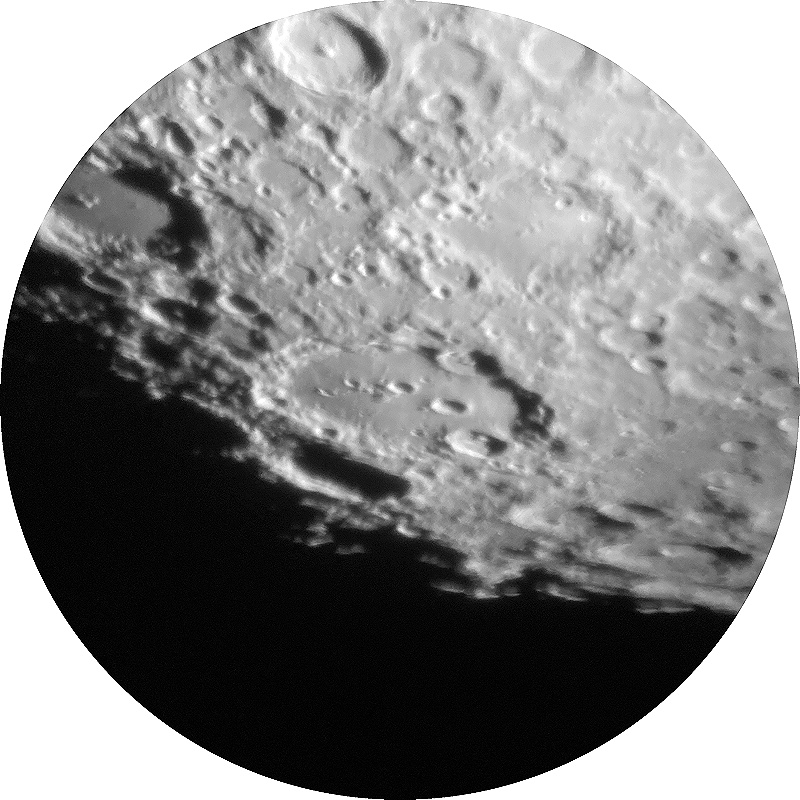Moon imaging
Posted: 25 November 2020
Wednesday night, 18 November 2020, was mostly clear but a short early evening commitment ended up being several hours long. Thursday, 19 November, was mostly clear until after sunset when the sky became partly cloudy. Clouds continued on Friday, 20 November, and Saturday, 21 November. Saturday afternoon there were two bright sundogs along with a nice halo around the Sun. I blocked the Sun using the observatory dome for this iPhone photo.

This was sunset on Sunday, 22 November.

Cloudy skies continued until Monday evening, 23 November. Unfortunately strong wind was blowing. The strong wind continued on Tuesday, 24 November, but decreased late afternoon.
|
Open: Tuesday, 24 November 2020, 1812 MST Temperature: 63°F |
Session: 1557 Conditions: Clear |
Equipment:
12" f/8 LX600 w/StarLock
2" 24mm UWA eyepiece
2" 9mm 100° eyepiece
2" 2X Powermate
2" 4X Powermate
Camera:
D850 DSLR
iPhone 11 Pro Max
After opening the observatory dome I viewed the planets Saturn and Jupiter (with three moons visible), 12x50 binoculars. Both planets were nicely visible well inside the 4.6° field-of-view of the binoculars. Then viewed the waxing gibbous Moon, 12x50 binoculars.
1818 MST: LX600 ON, StarLock OFF, High Precision OFF.
Viewed Jupiter and four moons, 102X. Then viewed Saturn and four moons, 102X. That was followed by Mars, 102X, and then the Moon, 102X.
Mounted the D850 DSLR at prime focus for this image of the Moon (1/320sec, ISO 400).

This is the crater Copernicus at prime focus + 4X Powermate + 2X Powermate (1/125sec, ISO 6400).

I did some initial tests of my new Pixel Wireless Shutter Release for an upcoming review.
Next, I did some lunar observing, 271X.
I then mounted the iPhone 11 Pro Max on the 2" 9mm 100° eyepiece. This is the crater Clavius, afocal 271X, taken with the iOS app NightCap Camera (ISO 32, 1/120sec, 1X lens).

During this session I did some tests for a review that will be published in Astronony Technology Today.
I then did some observing of sights along the lunar terminator at 271X, 542X, 1084X, and 2167X. The views were still good even when exceeding the theoretical magnification of 610X of the 12" telescope.
Took a final look at the Moon, 102X.
1945 MST: LX600 OFF.
|
Close: Tuesday, 24 November 2020, 1957 MST Temperature: 48°F |
Session Length: 1h 45m Conditions: Clear |
My review of the Explore Scientific 2" 9mm 120° eyepiece has been posted.
Comments are welcome using Email. Twitter users can use the button below to tweet this report to their followers. Thanks.
Cassiopeia Observatory Home Page
Copyright ©2020 Michael L. Weasner / mweasner@me.com
URL = http://www.weasner.com/co/Reports/2020/11/25/index.html
